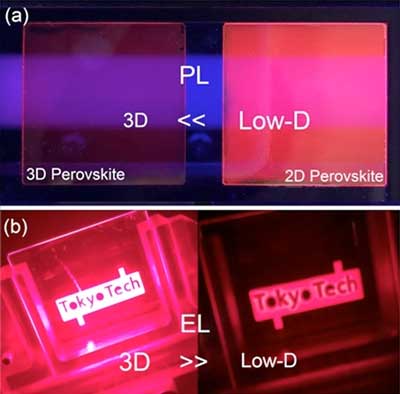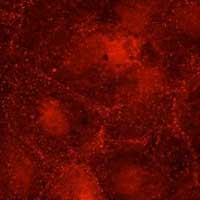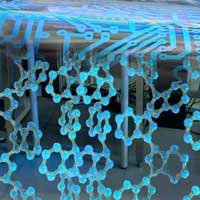 A recipe for creating a microscopic crystal structure that can hold two wavelengths of light at once is a step toward faster telecommunications and quantum computers.
A recipe for creating a microscopic crystal structure that can hold two wavelengths of light at once is a step toward faster telecommunications and quantum computers.
Wednesday, August 7, 2019
Designing a light-trapping, color-converting crystal
 A recipe for creating a microscopic crystal structure that can hold two wavelengths of light at once is a step toward faster telecommunications and quantum computers.
A recipe for creating a microscopic crystal structure that can hold two wavelengths of light at once is a step toward faster telecommunications and quantum computers.
Gold glue really does bond nanocages, 'contradicting' logic
 Researchers confirmed the existence of 'gold glue': bonds involving gold atoms, capable of permanently bonding protein rings. Skilfully used by an international team of scientists, the bonds have made it possible to construct molecular nanocages with a structure so far unparalleled in nature or even in mathematics.
Researchers confirmed the existence of 'gold glue': bonds involving gold atoms, capable of permanently bonding protein rings. Skilfully used by an international team of scientists, the bonds have made it possible to construct molecular nanocages with a structure so far unparalleled in nature or even in mathematics.
Tiny biodegradable circuits for releasing painkillers inside the body
 Researchers have developed biodegradable microresonators that can be heated locally with a wireless system. Doctors could soon be using them in implants to control the release of painkillers within tissue.
Researchers have developed biodegradable microresonators that can be heated locally with a wireless system. Doctors could soon be using them in implants to control the release of painkillers within tissue.
A 'switch' that regulates traffic across blood vessels
 Scientists have discovered a control mechanism that regulates the traffic of cells and substances across blood vessels. This effect can have significant impact on cancer metastasis.
Scientists have discovered a control mechanism that regulates the traffic of cells and substances across blood vessels. This effect can have significant impact on cancer metastasis.
Cellulose nanofibers to improve the sensitivity of lateral flow tests
 Researchers have carried out a research to enhance the sensitivity of lateral flow tests. They have proposed to include cellulose nanofibers in the test area, which has produced an average increase of 36.6 % of the colorimetric signal on positive tests.
Researchers have carried out a research to enhance the sensitivity of lateral flow tests. They have proposed to include cellulose nanofibers in the test area, which has produced an average increase of 36.6 % of the colorimetric signal on positive tests.
New synthesis method opens up possibilities for organic electronics
 Scientists modify a previous synthesis method to create a new semiconducting polymer with remarkable properties which could be used in organic electronic devices such as thin film transistors.
Scientists modify a previous synthesis method to create a new semiconducting polymer with remarkable properties which could be used in organic electronic devices such as thin film transistors.
Subscribe to:
Posts (Atom)
